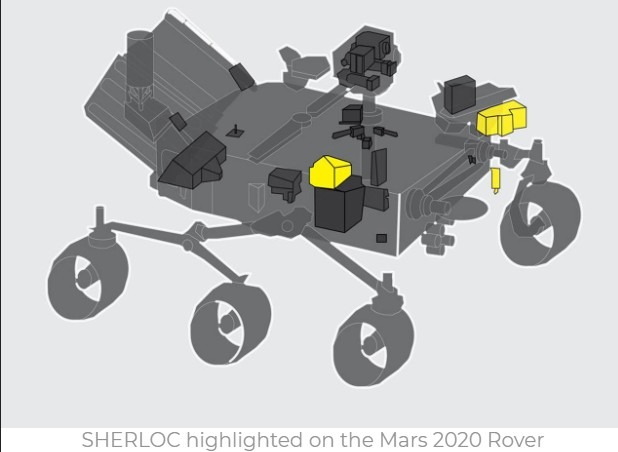SHERLOC Instrument Built At Johnson Space Center Will Travel To Mars
The summer NASA plans to launch the Mars Perseverance Rover to Mars as part of the Mars 2020 Mission. Perseverance is packed with equipment intended to search for signs of life on Mars at some point in the distant past. One of the tools on the rover is called the Scanning Habitable Environments with Raman & Luminance for Organics & Chemicals or SHERLOC. That instrument will search for chemicals on the Martian surface linked to life.The instrument is very complex, and to keep it working well, a team of researchers from the Johnson Space Center recently built a calibration device for the rover to check SHERLOC's function and properly tune it during the mission. There is a list of 11 things that have to be calibrated on the instrument for it to work properly. The calibration device that the researchers created is going to be used for other scientific and engineering investigations.

SHERLOC is mounted at the end of the seven-foot-long robotic arm attached to the rover and includes a laser, camera, and spectrometers. The instrument will search for substances that have been altered by water and possibly reveal evidence of past microscopic life on Mars. The calibration target device is about the size of a large cell phone and is mounted on the front of the rover.
On the face of the device are ten targets, including samples of different materials. SHERLOC will be calibrated by the researchers occasionally by directing it to scan the various materials on the cal target. Scientists will know what the readings of those materials should be when the instrument is working correctly. If the ratings are off, they can be adjusted to get them to work correctly.
Scientists will be able to compensate for errors when they analyze the data later. The calibration device will also be used for other test experiments. Some of the targets hold spacesuit materials that may one day be used to protect astronauts exploring Mars. The scans will help to calibrate the instrument and help scientists understand how the advanced fabrics and materials hold up on Mars.
